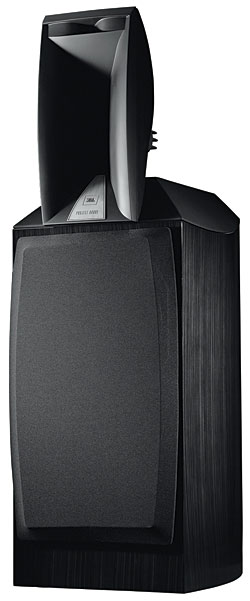| Columns Retired Columns & Blogs |
It would be interesting to compare how much of Project Array's magic that Mr. Timbers was able to distil into his curious Studio 5 series as both designs feature large bi-radial horns and trapezoidal cabinets.
Full disclosure, my own curiosity got the better of me last January and I purchased the 530s for my smaller 2 channel system and I haven't found reason to take them out yet. I figured that anyone implementing a compression driver mated to a horn, and sensitivity isn't the goal, has a design that certainly warrants a listen.
I haven't had the opportunity to listen to any of the Synthesis Project systems yet so I've always been left wondering.
 Assembly required two people: one to hold a flashlight so that the mounting holes could be aligned, and the other to guide the horn module into position. It took some time to balance the horn and find the correct alignment at which to secure the bolts—aligning holes drilled through two heavy, black structures of different shapes requires a good flashlight. But when we were done, the horn was precisely and rigidly attached to the bass enclosure.
Assembly required two people: one to hold a flashlight so that the mounting holes could be aligned, and the other to guide the horn module into position. It took some time to balance the horn and find the correct alignment at which to secure the bolts—aligning holes drilled through two heavy, black structures of different shapes requires a good flashlight. But when we were done, the horn was precisely and rigidly attached to the bass enclosure.





































